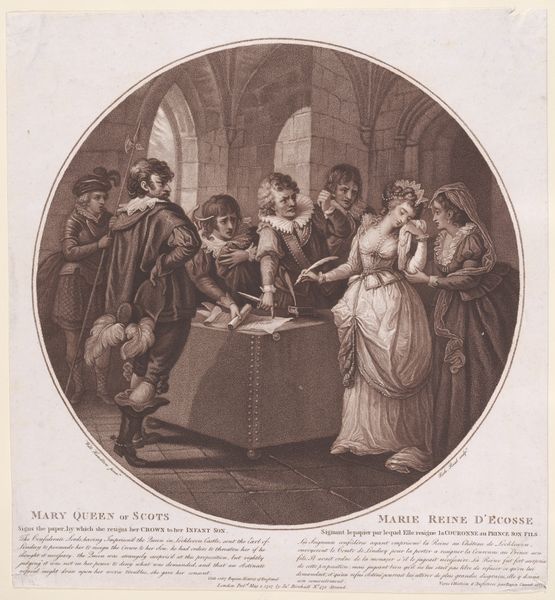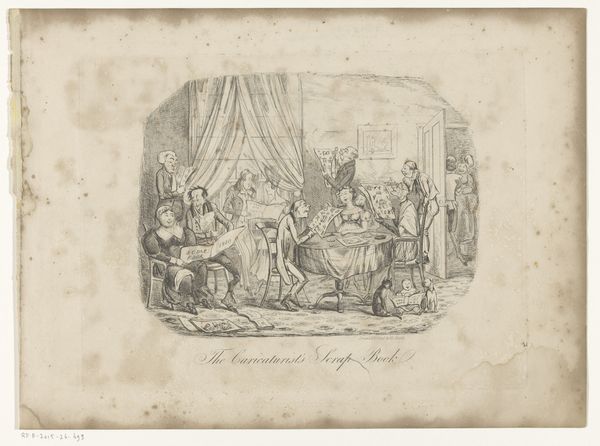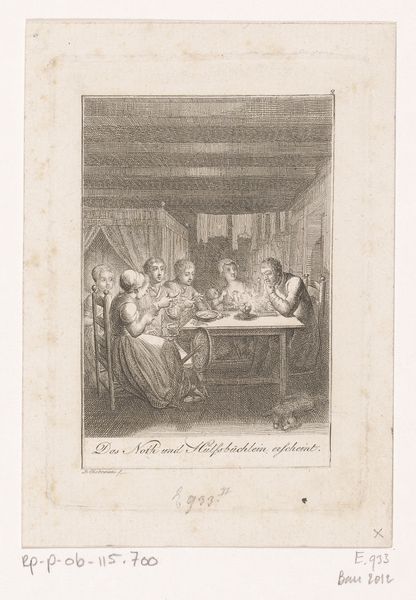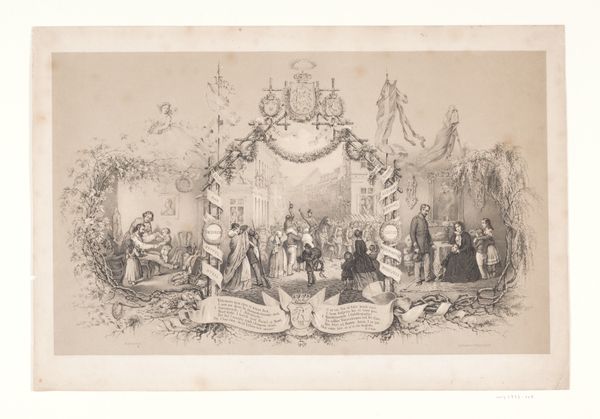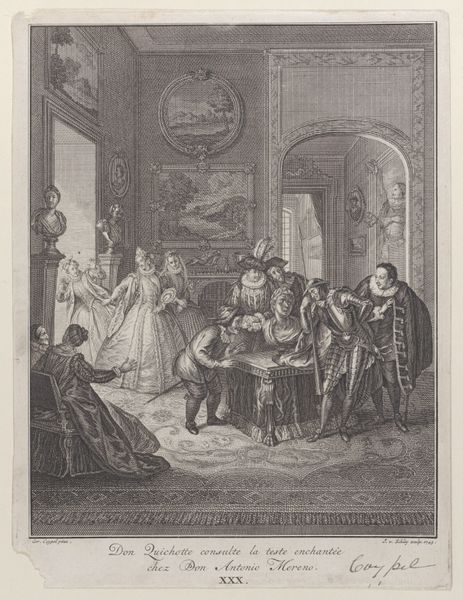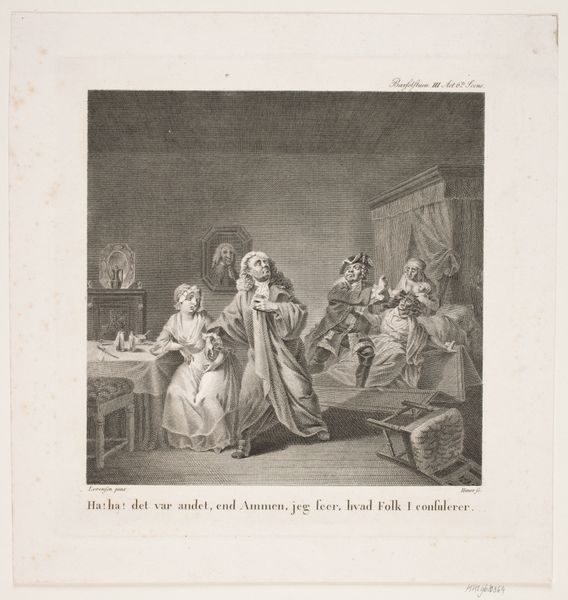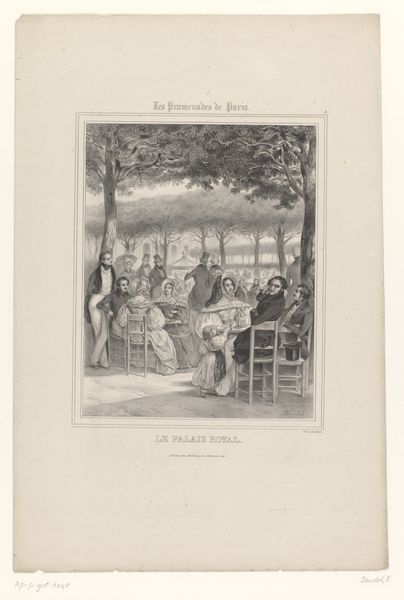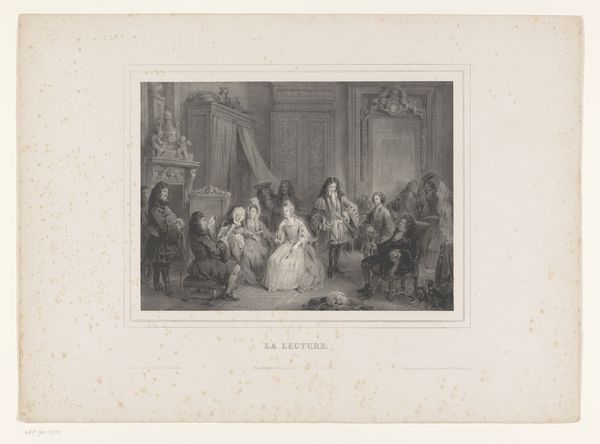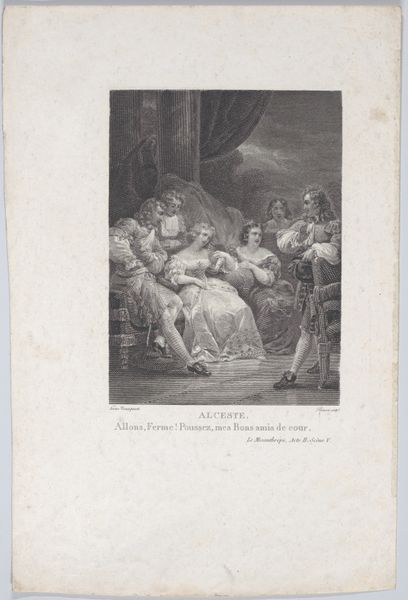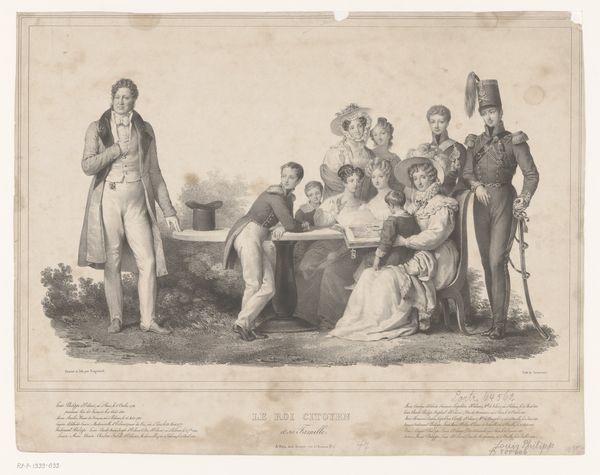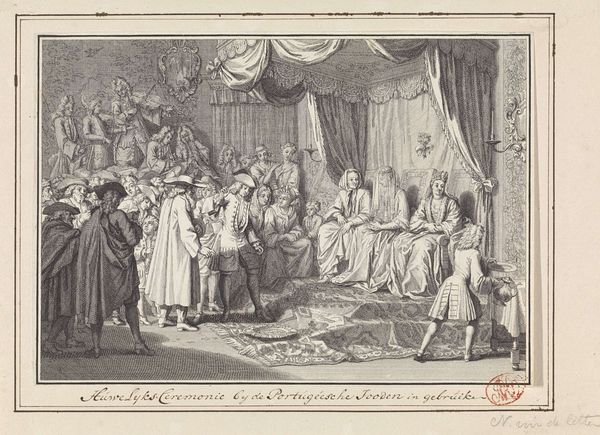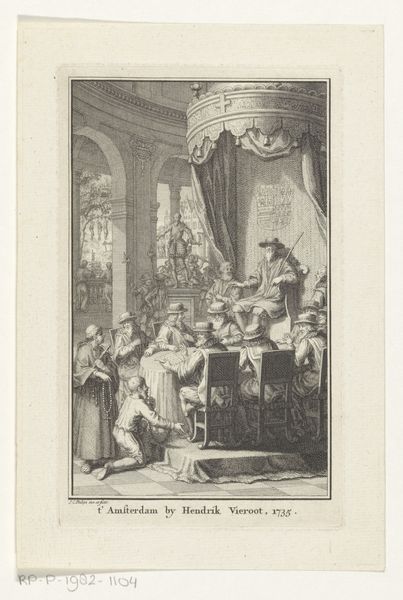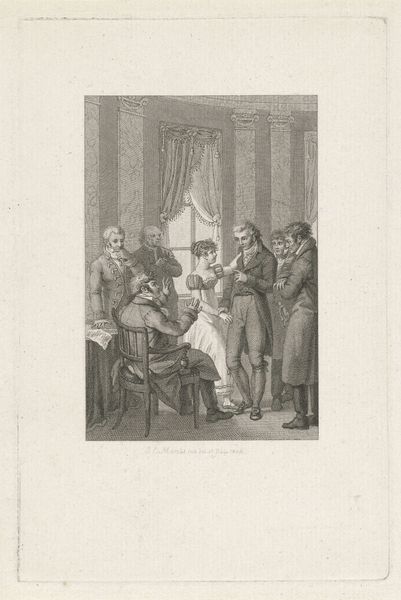
The Banquet (Shakespeare, Macbeth, Act 3, Scene 3) 1786
0:00
0:00
Dimensions: Sheet: 15 × 13 in. (38 × 33 cm)
Copyright: Public Domain
Curator: The tension in this piece is immediately palpable. The stark contrast and swirling clouds already suggest something unsettling. Editor: Indeed. We’re looking at "The Banquet (Shakespeare, Macbeth, Act 3, Scene 3)", an engraving dating back to 1786, after a painting by Henry Fuseli, now at the Metropolitan Museum of Art. This particular version is by John Baldrey. Curator: Right. And it’s capturing that pivotal moment in Macbeth, isn't it? The appearance of Banquo’s ghost throws the whole scene into disarray. The etching really emphasizes the chaotic energy amidst the formality of the banquet. Editor: Absolutely. Look at the composition; Baldrey uses line and shadow to isolate Macbeth and the ghost, set apart from the other figures. It's drawing attention to psychological fragmentation made visible through contrast between light and darkness. The figures around the table become mere observers, or perhaps unknowing participants in Macbeth's drama, visually unified by the round borders framing the artwork. Curator: And their reactions! Some seem oblivious, while others betray a hint of unease. It mirrors the power dynamics at play within the court; who knows what, and who feigns ignorance for self-preservation? The piece resonates even more profoundly when viewed through the lens of political and social intrigue. Editor: One might also consider Baldrey's skill in translating painting into print form. Notice how he uses fine lines to mimic the painterly quality, but adds a tonal dimension using shadow and hatching? Curator: A powerful choice to amplify the play's themes, for sure. I'm particularly drawn to the rendering of Lady Macbeth – trying, failing really, to maintain appearances. It reflects gender roles of that historical moment and perhaps something about class as well, where image becomes everything to social standing. Editor: True. Seeing how form dictates emotional interpretation helps bridge the gap between the artwork's context and its persistent effect. It’s about seeing the technical expertise while staying mindful of its capacity to create psychological intensity and meaning. Curator: Yes. It reveals a compelling, unsettling depiction of power, guilt, and social decay – all so relevant even now.
Comments
No comments
Be the first to comment and join the conversation on the ultimate creative platform.
